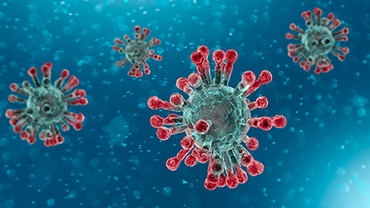Case definition for COVID-19, as of 3 December 2020
Clinical criteria
Any person with at least one of the following symptoms [1]:
- cough
- fever
- shortness of breath
- sudden onset of anosmia, ageusia or dysgeusia
Diagnostic imaging criteria
Radiological evidence showing lesions compatible with COVID-19
Laboratory criteria [2]
Detection of SARS-CoV-2 nucleic acid or antigen in a clinical specimen [3]
Epidemiological criteria
At least one of the following two epidemiological links:
- close contact [4] with a confirmed COVID-19 case in the 14 days prior to onset of symptoms
- having been a resident or a staff member, in the 14 days prior to onset of symptoms, in a residential institution for vulnerable people where ongoing COVID-19 transmission has been confirmed
Case classification
A. Possible case
Any person meeting the clinical criteria
B. Probable case
Any person meeting the clinical criteria with an epidemiological link
OR
Any person meeting the diagnostic imaging criteria
C. Confirmed case
Any person meeting the laboratory criterion.
Notes:
[1] Additional less specific symptoms may include headache, chills, muscle pain, fatigue, vomiting and/or diarrhoea.
[2] For further guidance on laboratory issues, see https://www.ecdc.europa.eu/en/novel-coronavirus/laboratory-support
[3] Rapid antigen test should be performed within 5 days from symptom onset or within 7 days from time of exposure. If the exposure time is unknown, the rapid antigen test should be performed as soon as possible. Refer to the ECDC rapid antigen test technical document for guidance on the settings rapid antigen tests should be used in, and for further details on confirmation of rapid antigen test results among asymptomatic persons.
[4] Close contact defined according to the ECDC guidance document ‘Contact tracing: Public health management of persons, including healthcare workers, having had contact with COVID-19 cases in the European Union’




